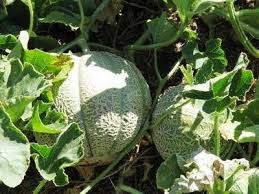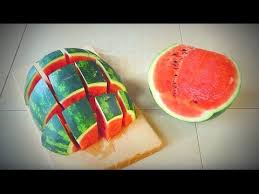
Melons and When to Harvest Them
KarenWhether it be watermelon or rockmelon, there are so many different varieties and growing the heirloom varieties will possibly give you huge satisfaction - if you like them, you can save the seed for next spring.
There are three main types of melon:
Watermelon (Citrullus lanatus) tend to be larger fruit with harder skins.
Rockmelon (Cucumis melo) are softer fruit with flesh that has a musky aroma.
Cantaloupe (Cucumis melo) are most common in Europe, generally rounded in shape with prominent ribs or sections and orange flesh.
Kiwano
We don't stock this.
Snake melon
Not one that we stock either but interesting all the same.
HARVEST for TASTE
Have you ever grown your own melons? Certainly recommended as you'll find the taste far superior to the supermarket versions. If you leave them on the vine until they are perfectly ripe you will see what we mean.
When it comes to harvesting your melons, there are no guarantees that you will get it right every time. The tapping and sniffing tests only go so far. Testing the sugar content with a refractometer is not viable for the majority of gardeners but here are some tips that may help you to harvest when the fruit is at its best.
3. When the tendril closest to the stem turns brown and dry it is ready.
5. When tapped the fruit should make a 'punk' sound (indicating dense flesh).
7. When the fruit stops gaining weight it is ready.

PICKING TOO EARLY
As melons do not have carbohydrate reserves (like squash or pumpkins), once picked they are unable to convert starch to sugar and will remain at the same level of sweetness. This is why it is best to leave them on the vine to develop to their maximum sweetness.
Just a wee note; the melons you purchase in the supermarkets are picked early and therefore the sugar content does not get a chance to develop to maturity for the best flavour. Honeydew melon is a good example. As they are prematurely harvested for the commercial market, they tend to be under-par in the taste test. No wonder I have been failing to find any kind of smell when testing them at the supermarket (wry smile because I know I am not the only one to be lifting the fruit to my nose in the hope of being able to declare the fruit ripe enough for purchase). The farmers' markets or roadside stalls tend to be a much better option for purchasing fruit that has been left to mature.
Do you have the same trouble as I do with the 'pink', 'pank' or 'punk' tapping? I struggle to tell the difference so tend to avoid this method. It seems better to use a combination of the above indications.
SEEDLESS MELONS
A request we often get is "do you have seeds for seedless watermelons?" Is it just me, or does that sound wrong? Breeding the seed (life) out of a melon just doesn't ring true.
It is completely understandable that people enjoy their watermelon without the pips (I admit to being one of them) and I treasure the summer hours I spent with my siblings, out on the back lawn, juice dripping down to our elbows, munching on sweet flesh and then having a competition to see how far we could spit the pips. I suppose it was a bit gross but it kept us entertained and out of mum's way.
One of the reasons we have not stocked this seed is that it can be difficult to grow the seedless melons. We like our gardeners to enjoy the fruits of their labour rather than struggle with getting them to grow.
Besides, did you realise that the seeds of the melon are the most nourishing part? The Chinese and African people have been growing melons for thousands of years to harvest the seed for eating and they often throw away the melon!
STORAGE of MELONS
The cooling of melons will slow down the ripening process, so once you take them out of the sun, they can be stored in the fridge. Melons will last 2-3 weeks without too much flesh degradation but chilling them for too long will damage the melon with pitting of the skin and the flesh turning mushy or developing an off-flavour.
In Japan a trend was started, growing watermelons in square boxes that were no bigger than the dimensions of a standard Japanese fridge. The result was a watermelon that always fitted in the fridge.

REFERENCE
There is a great reference book written by Amy Goldman called 'Melons for the Passionate Grower'. It provides practical advice on growing, pollinating, picking and preparing great harvests of melons. She is a huge advocate for preserving stocks of heirloom seed and has spent a large amount of time growing as many varieties as she can. Her research in this book and the photo's are excellent.













































